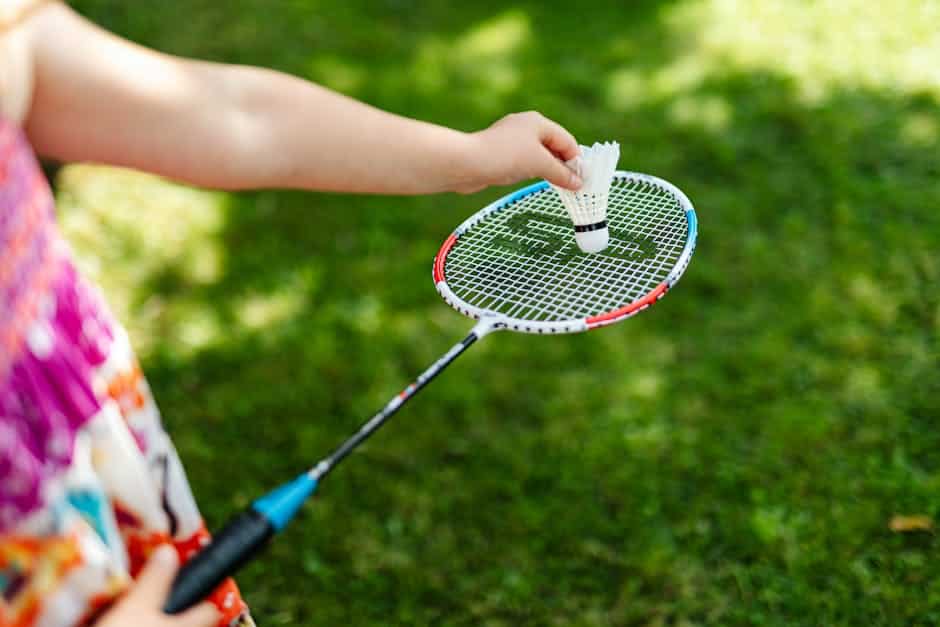How to Create a Personalized Shuttle Flash Badminton Training Plan
Are you passionate about badminton and keen to elevate your skills to the next level? 🏸 Creating a personalized shuttle flash badminton training plan might be just what you need. In this guide, we’ll explore strategies to customize your training routine to match your unique goals and abilities. Whether you’re a beginner or an experienced player, this approach will help you improve your game, enhance your fitness, and enjoy badminton even more!
Table of Contents
1. Introduction
2. Understanding Your Current Skill Level
3. Setting Clear Goals 🎯
4. Designing Your Training Plan
a. Scheduling Your Sessions
b. Core Skills to Focus On
c. Incorporating Fitness Training
d. Monitoring Progress
5. Staying Motivated
6. Conclusion
7. FAQs
Understanding Your Current Skill Level
Before diving into the specifics of your training plan, it’s crucial to evaluate your current skill level. This assessment will help tailor your training sessions to address your strengths and weaknesses effectively. Consider the following:
1. **Assess Your Technique:** Review your grip, footwork, and strokes. Are there areas where you consistently struggle?
2. **Match Performance:** Think about your recent matches. Do you often lose points due to specific mistakes or lack of endurance?
3. **Feedback from Coaches or Peers:** Honest feedback can be invaluable. Ask coaches or fellow players for their input on your game.
Setting Clear Goals 🎯
Setting achievable and specific goals is key to maintaining focus and measuring progress. Here are some examples:
1. **Short-Term Goals:** Improve net play in three weeks or increase smash speed by 10% in a month.
2. **Long-Term Goals:** Compete in a local tournament in six months or move from intermediate to advanced level in a year.
Remember to make your goals SMART: Specific, Measurable, Achievable, Relevant, and Time-bound.
Designing Your Training Plan
Scheduling Your Sessions
Consistency is vital in any training plan. Decide how many days a week you can commit to training without compromising rest and recovery. For most players, 3-5 sessions per week is ideal.
Core Skills to Focus On
Depending on your assessment, focus on the core skills that need the most attention. Here’s a breakdown of key areas:
1. **Footwork:** Essential for reaching shots efficiently. Practice ladder drills and shadow movements.
2. **Stroke Techniques:** Work on your forehand, backhand, and serve. Drill repetition is key to muscle memory.
3. **Strategy and Game Play:** Play matches to apply strategies and improve decision-making skills.
Incorporating Fitness Training
A well-rounded athlete is a successful athlete. Incorporate fitness training to build endurance, strength, and flexibility:
1. **Cardio:** Running, cycling, or skipping to boost stamina.
2. **Strength Training:** Focus on core, legs, and shoulders with bodyweight exercises or light weights.
3. **Flexibility and Recovery:** Include stretching and foam rolling in your routine to prevent injuries.
Monitoring Progress
Keep track of your development by maintaining a training journal. Record your sessions, challenges faced, and improvements noticed. Regularly reviewing this can provide motivation and insight into areas needing adjustment.
Staying Motivated
Motivation can wane, especially during tough training phases. Here are some tips to stay inspired:
1. **Mix It Up:** Vary your drills and routines to prevent boredom.
2. **Celebrate Small Wins:** Acknowledge progress, no matter how small.
3. **Find a Training Partner:** A buddy can provide encouragement and a healthy competitive spirit.
Conclusion
Creating a personalized shuttle flash badminton training plan is all about understanding your unique needs and setting realistic goals. By focusing on key skills, incorporating fitness, and staying motivated, you can elevate your game and experience the joy of improvement. Remember, the journey is as important as the destination. Happy playing! 🏸
FAQs
Q1: How long should each training session be?
A: Most effective training sessions last between 60 to 90 minutes, including warm-up and cool-down periods.
Q2: Can I train alone, or do I need a coach?
A: While having a coach can provide structured guidance, you can still make significant progress by training alone with the right resources and dedication.
Q3: What equipment do I need for training?
A: Basic equipment includes a good-quality racket, shuttlecocks, comfortable sports attire, and proper court shoes.
Q4: How can I improve my mental game?
A: Practice mindfulness, visualization techniques, and stay positive during matches to enhance your mental resilience.
